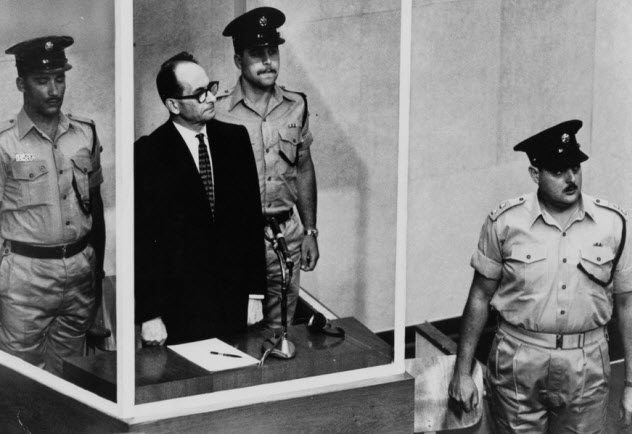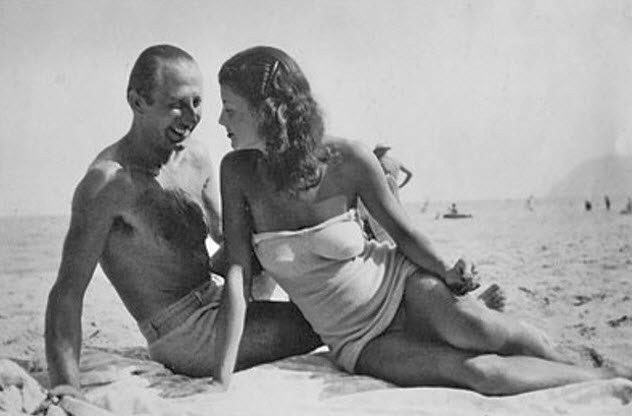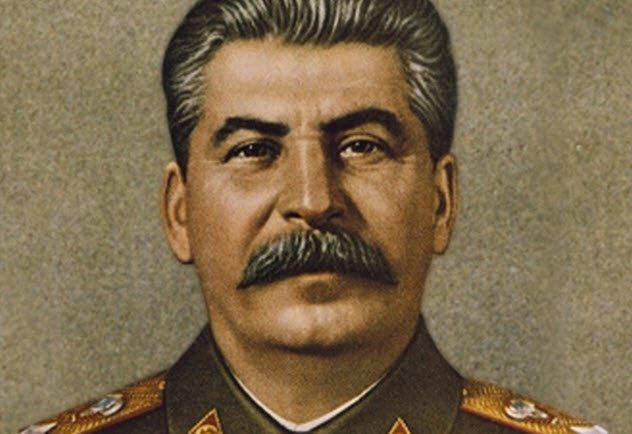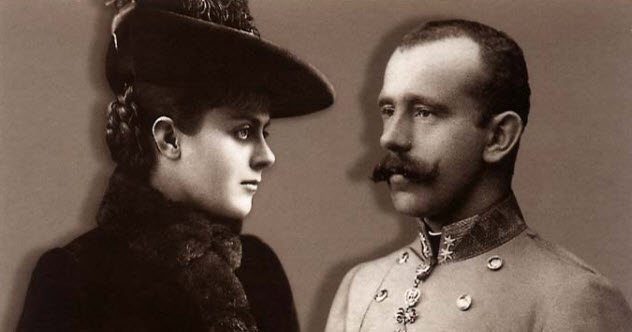10 Two Divorces Created The PG-13 Rating
A look at the box office will show how influential the PG-13 rating has become. Eight of the 10 past highest-grossing movies of the year were rated PG-13. This rating has been blamed for drastically reshaping Hollywood by dumbing down films for adults and children alike. However, the movie that inspired the creation of the PG-13 rating was not really child-friendly. 1984’s Indiana Jones and the Temple of Doom featured graphic scenes of monkey brains, child slaves, and a beating heart ripped out of someone’s chest. Behind the scenes, the hearts of George Lucas and Steven Spielberg were ripped out of their chests, too. The darker tone of the movie was caused by Spielberg’s divorce from Amy Irving and Lucas’s from his film editor wife, Marcia. The two men used the movie to vent about their divorces. Looking back, Lucas said that “we certainly took it to the extreme.” He was right. After seeing the violence and gore, the MPAA thought it was not appropriate for children. In response, they created the PG-13 rating.[1]
9 Adolf Eichmann Was Captured Because His Son Bragged To His Jewish Girlfriend
Responsible for sending millions to their deaths in the Holocaust, Adolf Eichmann was one of the most wanted war criminals for more than a decade. Like all Nazis, he was hiding somewhere in South America. He would have evaded capture if it wasn’t for his son. Nicholas Eichmann started dating the Argentinian Sylvia Hermann. Not knowing she was Jewish, Nicholas boasted about his father’s role in the Holocaust. He even mentioned that he wished the Nazis had “finished the job.”[2] Unsurprisingly, this caused a rift between the two. The stupidest thing Nicholas did was sometimes use the name Eichmann. Sylvia Hermann’s dad, a Holocaust survivor himself, had read about Adolf Eichmann in the papers. He called Mossad, which eventually captured Adolf and put him on trial. The 1961–62 Adolf Eichmann trial was a watershed moment for the Holocaust. It was the first trial to be televised, thus changing the conversation around the Holocaust. For the first time, people heard the testimonials of survivors.
8 A Honeymoon Stopped Marvel From Going Down With The Hindenburg
In 1937, Martin Goodman and Jean Davis had just finished their honeymoon. They wanted to fly back to New York on one of those new Hindenburg airships. Goodman tried to buy tickets. There were still some available, but none of the seats were next to each other. Instead, the couple flew back on a plane and not a flaming ball of gas. They landed in New York and, later that year, launched Timely Comics, the early precursor of Marvel Comics. Jean Davis also changed Marvel in another way. As a young upstart pulp magazine division, Timely Comics hired Jean’s 17-year-old cousin, Stanley Martin Lieber.[3] Stanley Lieber worked as an assistant for Goodman by proofreading issues until he wrote his first story in 1941 under the pseudonym Stan Lee.
7 A Honeymoon Saved Kyoto From Being Nuked
Hiroshima will always be synonymous with the nuclear attack that leveled the city. More than 100,000 citizens died from the initial blast and radiation. The event is even more tragic because those people lost their lives over something as arbitrary as where a guy went on vacation a few years earlier. In the 1920s, Henry Stimson, then the governor-general of the Philippines, went on his honeymoon with his wife to Kyoto. While there, Henry Stimson fell in love with the city. In the 1940s, he served as secretary of war. That made him privy to a memo circulating with the five potential targets for the bomb. Number one on that list was Kyoto, the old capital of Japan and the center of historical and artistic treasures. It would have been absolutely demoralizing for Japan, making it the perfect choice. But Henry Stimson sent another memo to President Truman to protest the choice. Stimson could not let the United States destroy the city where he and his wife had honeymooned. Truman acquiesced, and Kyoto’s citizens and irreplaceable cultural treasures were saved.[4]
6 Segregation Ended Because A Judge Cheated On His Wife
As the son of a Confederate veteran and a native of Charleston, South Carolina, Judge Waties Waring seemed like the furthest thing from a civil rights icon in the 1940s. He would have kept that up if it wasn’t for Elizabeth Avery Hoffman. After meeting at a party, Waring and Elizabeth had an affair for months. Now in love, Waring divorced his Southern wife of 32 years for this Detroiter. Charleston society was not only aghast that he had cheated on his wife but that the other woman was a Yankee. Perhaps most egregious was that Elizabeth was very active in the civil rights movement. After marrying her, Judge Waring became equally interested in the civil rights movement. Elizabeth is considered the major reason that he became an outspoken critic of segregation and a champion for racial justice. The city turned on him. Some residents threatened his life, burned crosses on his yard, and even spat on his wife. Waring was not moved. He was one of the first Southern judges to desegregate his courtroom.[5] He became the first federal judge since 1896 to opine that the “separate but equal” doctrine was unconstitutional in Briggs v. Eliott. Waring was also the one who pushed Thurgood Marshall to expand the case at the Supreme Court level into the historic 1954 Brown v. Board of Education case.
5 Hoover Ignored Pearl Harbor Warnings Because A Spy Had Sex
During World War II, Dusko Popov was a spy for the German army. Or at least, that was his cover. He was actually a double agent working for MI6. As a British spy, he had discovered the Japanese plot to bomb Pearl Harbor. In August 1941, he went to New York to give this information to the FBI. He told some agents, who understood the consequences of something like this, so they advised him to go see J. Edgar Hoover. Popov and his then-girlfriend Terry Richardson sneaked back to their hotel for an “undercover” mission. What can you expect from the guy who’s allegedly the inspiration for James Bond? Hoover hated the fact that this foreigner had taken a woman from Florida to New York to have sex with her. Hoover considered this was a violation of the Mann Act and threatened to have Popov put in jail.[6] Instead of that, Popov just went back home and Hoover disregarded all of Popov’s findings. A few months later, Pearl Harbor was bombed.
4 Eli Whitney’s Lover Bought A Cat, And Slavery Continued For Decades
In the early 1790s, slavery was on its last legs. Under the Constitution, the slave trade had been set to end in 1807. In fact, slavery would have become an outdated model, but then Eli Whitney invented the cotton gin. The effects of this machine are hard to overstate. Cotton soon overtook rice and tobacco as the major crop. Unlike rice and tobacco, however, cotton required extensive labor. The unprecedented revenue and the demand for slaves made the slave trade boom. This resulted in dramatically higher profits for planters, which then led to a seemingly insatiable increase in the demand for more slaves. It also ushered in the abusive chapter we associate with slavery. As cotton grew best in the West, the crop brought slavery westward as well. It also forced the South to defend slavery more, which culminated in the Civil War. All of this is owed to a cat. While visiting his girlfriend, Eli Whitney saw a cat claw a chicken. The cat went for the kill, but its claws only caught feathers. Eli then realized that the same technology could pull the seeds out of cotton without ruining the plant. If that cat had not wanted to eat that chicken, slavery would have ended a lot sooner.[7]
3 Stalin Lost His Humanity When He Lost His Wife
In 1899, Joseph Stalin was just a young man in seminary school. Unable to continue his education because he couldn’t afford the tuition, he started committing minor crimes in Tiflis. While a petty criminal and revolutionary, he met Ekaterina Svanidze. A far cry from what he would become, Stalin was a kindhearted and compassionate lover. An associate of Stalin’s noted that he was “amazed how [Stalin], who was so severe in his work and to his comrades, could be so tender, affectionate, and attentive to his wife.”[8] That kindness did not last long as Ekaterina died from typhus a year after they married. Stalin was heartbroken. Upon hearing the news, he threatened suicide and a gun had to be wrestled from his hand. At the funeral, Stalin threw himself into her grave until he was dragged out. Before leaving her funeral, he said, “This creature softened my heart of stone. She died, and with her died my last warm feelings for humanity.” Following her death, he left Tiflis and moved to Petrograd. There he changed his name from Ioseb Besarionis dze Jughashvili to “Man of Steel,” or “Stalin,” and started his political career. True to his word, Stalin really did lose his heart when his first wife died. No longer the tender lover from before, Stalin was so cruel that he even killed Ekaterina’s entire family during his purges.
2 Pol Pot Vowed To Destroy Democracy After A Bad Breakup
Like Stalin, Pol Pot was also a hopeless romantic disguised as a genocidal maniac. Before he would order the deaths of millions in the Cambodian killing fields, he was a French literature teacher named Saloth Sar. He’d been at school for a year or two when he fell hopelessly in love with a former beauty queen and princess, Son Maly, in 1949. But she did not feel the same way. Five years later, she left him for famed democratic supporter and Pol Pot’s long-term political rival Sam Sary. The breakup was devastating for Pol Pot.[9] It hardened him to love. More importantly, his hatred of Sam Sary turned into a hatred of democracy. Following the breakup, Pol Pot wandered around listlessly for months. During this time, his mentor, Keng Vannsak, tried to cheer him up by giving him traditional Cambodian stories where princes learn to fight in the jungle. He read these stories as an instructional manual and set off for the jungle. There, he met Marxist revolutionaries who converted him to the cause.
1 A Cut-Off Penis Caused World War I
In 1889, Rudolf, crown prince of Austria, was the only son of Franz Joseph, emperor of Austria-Hungary. They got along fine, and Rudolf was destined to take over the throne. But that all changed when the 30-year-old prince met the 17-year-old Baroness Mary Vetsera. Like all classic romances, the father disapproved. Franz Joseph demanded that the couple end their relationship, and the crown prince did—as part of a suicide pact. But Mary was afraid that they were going to break up. So after a night of making love, she decided to cut it off. The “it” refers to the relationship and his penis.[10] While he was sleeping, she took a razor and chopped off his penis. Unable to cope with the loss of his relationship and his penis, he shot her in the head. Consumed by guilt, he then turned the gun on himself. Austria had to look to Rudolf’s cousin Franz Ferdinand, who fought with Emperor Franz Joseph about nearly everything. Most importantly, Franz Ferdinand wanted to grant Slavs equal rights with Austrians and Hungarians in the empire. Many historians believe that this is exactly why Serbian nationalists chose to assassinate Archduke Franz Ferdinand. Things spun out from there, and World War I was the result. If you loved this article, please do not cause another world war. You could just follow Nate on Twitter. If you didn’t love the article, feel free to email him criticisms or questions here. For more history lists, check out Nate Yungman’s other articles on Listverse.
























